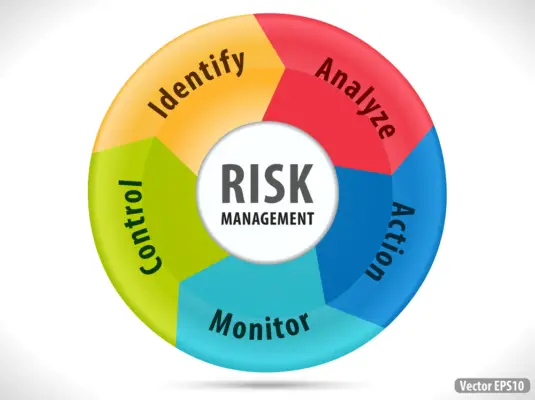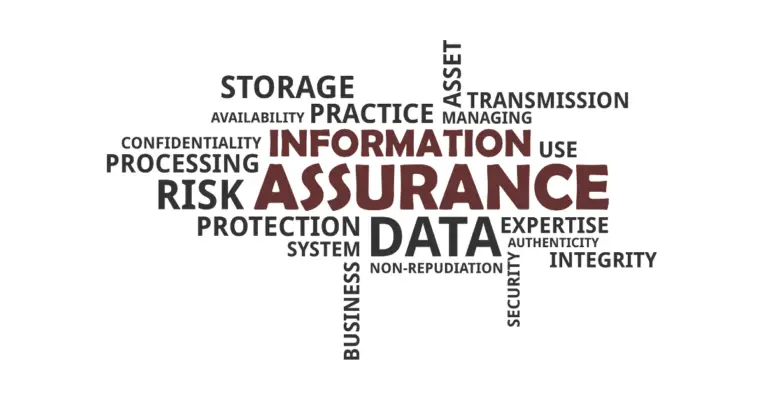Most people know that stock trading is a risky venture. After all, the stock market is notoriously volatile, and even the best-informed investors can lose money.
However, many people don’t realize that there are ways to mitigate these risks. One of the most important things that any stock trader can do is to practice stock market risk management.
This means taking steps to minimize losses and maximize gains. For example, a trader might use stop-loss orders to limit their downside risk, a proper risk management strategy.
Or they might diversify their portfolio by investing in various asset classes. Great risk management practices allow experienced traders to maximize their losses and make a profit.
Managing financial markets requires knowledge of various variables and effective risk management strategies. Major economic forces, like interest rate decisions or trade wars, typically influence every industry worldwide.
Secondary economic factors such as economic report impact investors’ and consumers’ confidence and influence short- and medium-term trends.
Tertiary economic indicators such as quarterly income reports provide insights into specific business sectors. Though their effects can be limited, the resulting movement could cause massive movement on target assets.
When calculating risk when a business invests in stock, the rule of thumb is that the greater the risk, the greater the possible reward. There will always be many different parts involved.
However, it is logical to categorize risk/gain ratios in that manner because it gives investors an unbiased way to measure risk in a single trade.
In stock markets, risks may differ from one approach to another. In some cases, investors should look at past performance to assess the possibility of volatility in an asset. Another investment diversification method involves a range of instruments and asset classes.
Risk management is one of the most important aspects of a successful stock trader. Many traders believe they can mitigate risks by picking the right stocks and making smart trades.
While this may be true to some extent, it’s not the only factor that affects a stock trader’s success. To truly minimize risk, you need to understand risk management principles and use them in everything you do as a trader.
Through doing so, you can protect your assets while still taking calculated risks to maximize your profits. So what are these principles, and how can you apply them in trading? That’s what we’ll explore in today’s blog post.

What is Risk Management in Trading?
Risk management is the process of identifying, analyzing, and taking steps to minimize or mitigate the risks of a trading strategy.
A number of risks can impact a trade’s profitability, including market risk, liquidity risk, counterparty risk, and operational risk.
A well-designed risk management plan will consider all of these risks and seek to minimize their impact on the overall strategy. In some cases, this may mean using hedging techniques or limiting orders.
It may also involve diversifying one’s portfolio across a number of different asset classes. Ultimately, risk management aims to protect against potential losses and ensure that excessive risks do not offset any profits.
Risk avoidance in e-commerce has become a key component of avoiding losses incurred in stock market trade.
Risk management includes identifying, evaluating, and mitigating risk, which arises when markets move in opposite directions than expectations.
It is also very important to set your expectations if you thoroughly analyze the financial instruments market and have already anticipated potential risks.
Trends play a vital role depending on the stock price and expected return. Trends generally refer to the direction or movement of the market, asset prices, or any similar measure.

How does Risk Management work?
Risks are the risks resulting if the real return from investment (ROI) varies from the predicted return. These deviations are caused by events occurring in the trade that differ in directions and magnitudes.
A positive situation can cause deviations and result in better profits than expected. Unfavourable events can cause a negative variance and can result in less-than-expected earnings.
Each market influencer effect factors affect trade volumes based on location frequency, size and direction, causing variations in prices and prices. It’s known as volatility.
Importance of Risk Management for Traders
Risk management can help traders avoid large losses, manage emotions, and make more informed decisions. Here are three reasons why risk management is so important for traders:
1) Risk management can help traders avoid large losses.
If traders do not manage their risks properly, they could lose much money on a single trade. By using risk management techniques, traders can limit their losses and protect their capital.
2) Risk management can help traders manage their emotions.
Trading can be an emotional roller coaster. Fear, greed, and hope can all lead to poor decision-making. By managing their risks, traders can take the emotion out of trading and make more objective decisions.
3) Risk management can help traders make more informed decisions.
Informed decision-making is the key to successful trading. Risk management is essential for any trader who wants to be successful.
Although it’s tempting for all traders to accept every possibility, an investment’s risks need to be known well before it becomes too much.
All successful traders recognize and understand that trading has complicated processes, and a thorough trading risk management system can give you a stable income source.

Tell me the main type of risk management in trading.
The risks involved in trading are many. All trading transactions will probably have a potential loss. Similarly, successful traders may lose more in a trade when their profits outweigh their losses; they can also gain more if they lose more than they lost on losses.
Another trader can earn money from most trades and lose money over time if they lose big profits or allow the loss of trade to take longer to recover. It’s primarily important for traders to determine their win/loss ratio and average size.
Risk Management generally involves the minimization and elimination of risk without sacrifice. These can be attributed to the risk/reward ratio, an example of cost-benefit analysis based upon expected profits compared with investment risk.
Hedging is a form of risk management that uses offsetting positions or protected positions to make cash when the primary investments lose their principal investments.
A fourth approach consists of setting trade limits, such as stop-loss orders, so that positions can be exited automatically if the market has fallen too low.
Rules keep emotions out of trading decisions
Managing emotions can be incredibly challenging for traders. There’s common sense in trading – a successful trader could be giving his trading system to a rookie. This rookie may end up losing his entire income.
They’ll have the loss no matter how well the market says it and will lose it too. It is, therefore, vital to have an established trading strategy and follow specific guidelines defined under that strategy.
Make it a profitable trade if your system wants to do so. Never second-guess anything.
Managing Risk as a Trader
When a trader is more concerned with quick results than the investment strategy because the trading method differs from the investment, it is quite distinct from the management of risk by the investor.
Although many traders dismiss risk-management practice entirely for trading, it is just as vital as investing in some cases.
Evaluation of Trading Risks
A trading risk evaluation is aimed at measuring portfolio performances. One has Alpha, while the other has Beta. Alpha indicates how an investment performs in relation to a benchmark. The portfolio’s average return on the benchmark index represents its Alpha.
If Alpha has good returns, the investments have outperformed their benchmarks. In other words, the portfolio has underperformed. An Alpha value of 0. This indicates that the portfolio follows benchmarks closely.
Minimizing losses
Legend trading expert Ed Seykota says trading involves three steps: “Cut your losses.” Generally, the best rule when securing a trading account is never a 1% loss for the same transaction.
Ideally, it is possible to suffer a series of losses without negative impact on your assets. The larger the drawdown, the harder it is to get back. You’ll be able to break out with just an 11.6% profit on a 7% loss of equity.

How can I assess trading risk?
There are many methods for assessing trade risks. The main risk analysis methodology includes managing active and passive threats. Active risks mean risks arising from trading strategies in a portfolio, while passive risks describe risks caused by exposure to investments in the market.
Practical application of Alpha and Beta
Alpha and beta values are determined from past performance of financial assets and an index over one-year periods. The data then allows the prediction of active risk exposure in an identical period in the future using the analysis.
For example, if Apple is launching an iPhone, we want to find out how it affects Apple stock. We analyze performance over the last three months following the release to determine the risks associated with trading Apple stocks for the coming three months.
The alpha and beta values are determined by analyzing the NASDAQ 100 Index.
Passive Risk and Beta
Passive risk can be viewed as objective risk exposure and represents risk resulting from market actions we cannot control. Beta refers to the passive risk ratio measured to assess asset volatility compared to the benchmark.
A beta above 1 indicates a high asset price has greater volatility than the benchmark price, while a beta below 1 indicates lesser volatility. If the Alpha is higher, the risk is higher for investors. A lower beta, however, means fewer potential risks and fewer profits.
Active Risk and Alpha
Active Risk can be viewed as subjective risks exposed that reflect the risks that arise through trade strategies. Alpha measures a risk ratio based on performance against an asset.
A positive Alpha indicates an increase in returns compared to benchmarks, while a negative Alpha means lower returns.
Using this method, the Facebook company’s 30-day beta was calculated against its competitor’s 3%, so Facebook had a 3% better return on investments than Tech100 during that period.
Confidence interval
A simple method to measure the variance between alpha and beta values and determine a confidence interval is to improve multiple periods. Therefore, we have a 67% probability the test is in the range between 1 negative – SD / 1 positive.
In particular, we can predict the outcome with 100% confidence. Alpha averages are 4.6%. With 95% confidence, we can predict alpha between 3.1% and 4.5% for the next three months.
Mitigation: Risk Management Strategies
The risk mitigation technique includes identifying the resulting passive risks and the risk mitigation strategy.
Hedging
Hedging is an approach to managing trading risk. When you open your trading position, the same money can be put in another place with the same assets. In cases where one position is lost, another will profit in return.
The AvaTrade call-and-put options trading, where the price of strikes is capped at 30 minutes, and allows exits from the market at expiration, are often used as hedge strategies to reduce costs of the alternative position.
AvaTrade, a new Ava Protection tool for trader management, employs a unique approach based on a simple and efficient approach to managing risk.
Budget-based approaches to risk management
Budgets are considered a way to manage finances. Depending upon our resources, leverage and trade objectives, the investment guide outlines strategies to allocate funds for all investment activities.
The report includes position sizes and ratios, price targets and exit strategies for investing. If one leaves a losing position exposed to a possible reversal in the markets, the entire capital is destroyed.
Conclusion
A sound risk management plan is necessary for any trader, whether a day trader or a long-term investor.
Understanding your personal tolerance for risk and implementing a risk management strategy that matches your trading style can help mitigate unnecessary losses and protect your hard-earned profits. What strategies do you use to manage your risks when trading stocks?
Chris Ekai is a Risk Management expert with over 10 years of experience in the field. He has a Master’s degree in Risk Management from University of Portsmouth and is a CPA and Finance professional. He currently works as a Content Manager at Risk Publishing, writing about Enterprise Risk Management, Business Continuity Management and Project Management.

